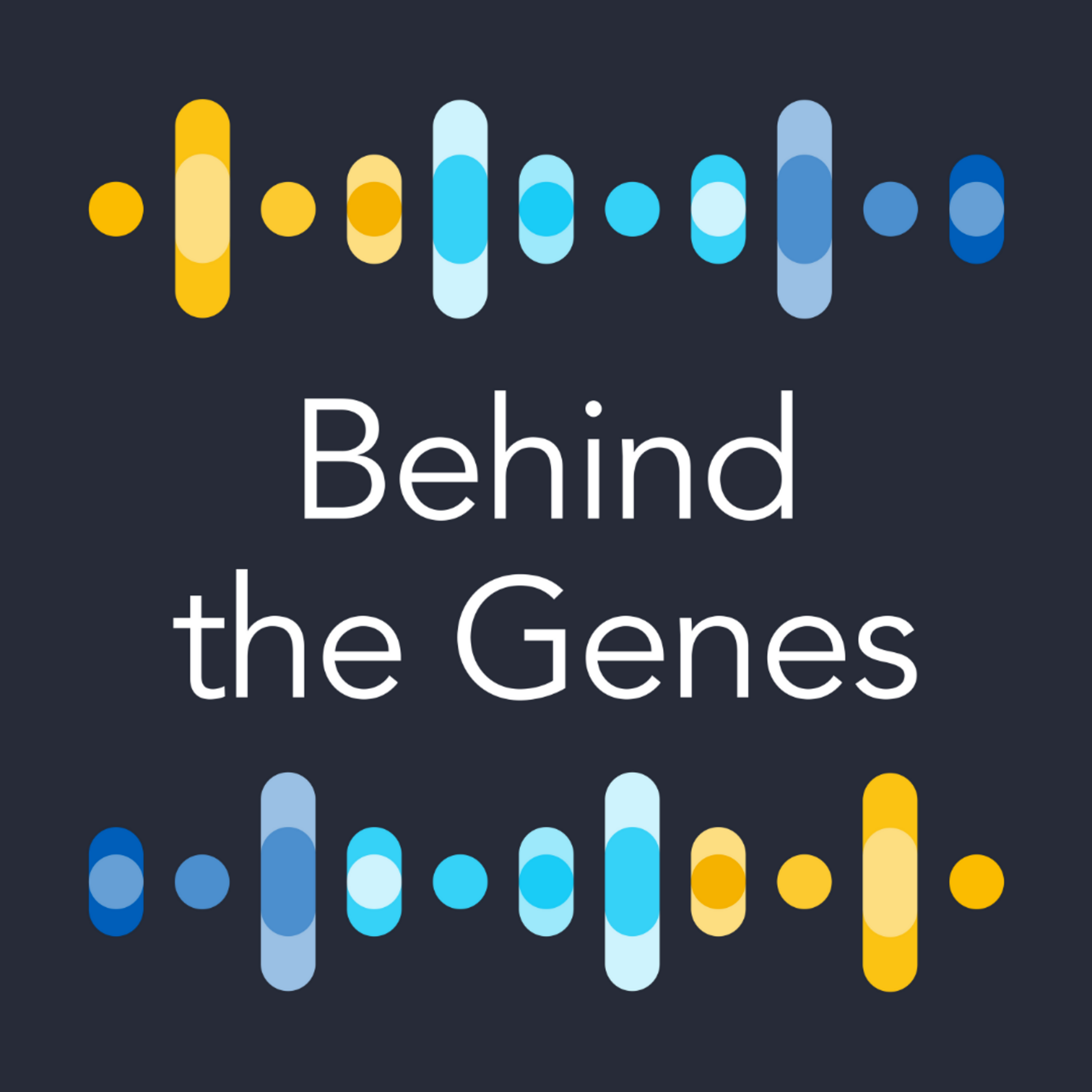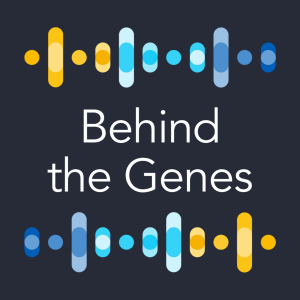
We are Genomics England and our vision is to create a world where everyone benefits from genomic healthcare. Introducing our refreshed podcast identity: Behind the Genes, previously known as The G Word. Join us every fortnight, where we cover everything from the latest in cutting-edge research to real-life stories from those affected by rare conditions and cancer. With thoughtful conversations, we take you behind the science. You can also tune in to our Genomics 101 explainer series which breaks down complex terms in under 10 minutes.
Episodes

Wednesday Oct 23, 2024
Nicole Chai: How does X-linked inheritance work?
Wednesday Oct 23, 2024
Wednesday Oct 23, 2024
In this explainer episode, we’ve asked Nicole Chai, Research and Development Bioinformatician at Genomics England, to explain what X-linked inheritance is.
You can also find a series of short videos explaining some of the common terms you might encounter about genomics on our YouTube channel.
If you’ve got any questions, or have any other topics you’d like us to explain, feel free to contact us on info@genomicsengland.co.uk.
You can download the transcript or read it below.
Florence: How does X-linked inheritance work? I'm joined by Nicole Chai, Research and Development Bioinformatician for Genomics England, to find out more. So firstly, Nicole, can you explain a bit about the X and Y chromosomes?
Nicole: Sure. So, the X and Y chromosomes are what we call sex chromosomes. And chromosomes are packages of DNA in our cells that are inherited from our parents, and they contain information about our physical and biological traits.
Some examples of traits that are determined by our chromosomes include what colour our hair is and what colour our eyes are. And each of these individual traits are determined by smaller sections on the chromosome called genes. Genes can also determine what medical conditions we may inherit from our parents.
As humans, we all typically have 23 pairs of chromosomes in each of our cells. One of these pairs consists of the sex chromosomes, and as their name suggests, sex chromosomes determine sex of an individual. And typically, females will have two X chromosomes and males will have one X and one Y chromosome.
Florence: So then, what do we mean by the term X-linked condition?
Nicole: So, an X-linked condition means that the condition is associated with genetic changes on the X chromosome. And what we mean when we say genetic changes are changes to the normal sequence of DNA on the gene. And this can sometimes lead to medical disorders.
Florence: Do you have a specific example of an X-linked condition?
Nicole: Sure. So, an example of an X-linked condition is Duchenne muscular dystrophy.
And with this condition you get a progressive loss of muscle due to the lack of a protein known as dystrophin. Another example of an X-linked condition is red-green colour blindness. And this is where people affected with the condition can't see shades of red and green the way most people see them.
Florence: Could you explain how X-linked conditions are inherited?
Nicole: Sure. So, for many conditions, there are two ways they can be inherited, either dominantly or recessively. Dominant inheritance is usually when you just need one copy of the gene to be affected by the condition, whereas recessive inheritance is when you need two copies of the gene to be affected by the condition.
However, this works slightly differently with X-linked conditions, and most X-linked conditions are inherited recessively.
Florence: So why does inheritance work differently for X-linked conditions?
Nicole: So the reason that inheritance works differently for X-linked conditions is down to the differences between sex chromosomes, between females and males. As females have two X chromosomes and males have X and Y, this means that for recessive excellent conditions, males only need one altered gene to have the condition.
So, because males only have one X chromosome, if they inherit a faulty copy of a recessive gene, they don't have another healthy copy to compensate.
On the other hand, as females have two X chromosomes, if they inherit just one faulty copy, they do have a healthy one that can compensate for that one. So as a result, what we tend to see is that males are more commonly affected by X-linked recessive conditions.
Florence: That was Nicole Chai explaining the term X-linked inheritance. If you'd like to hear more explainer episodes like this, you can find them on our website www.genomicsengland.co.uk. Thank you for listening.
